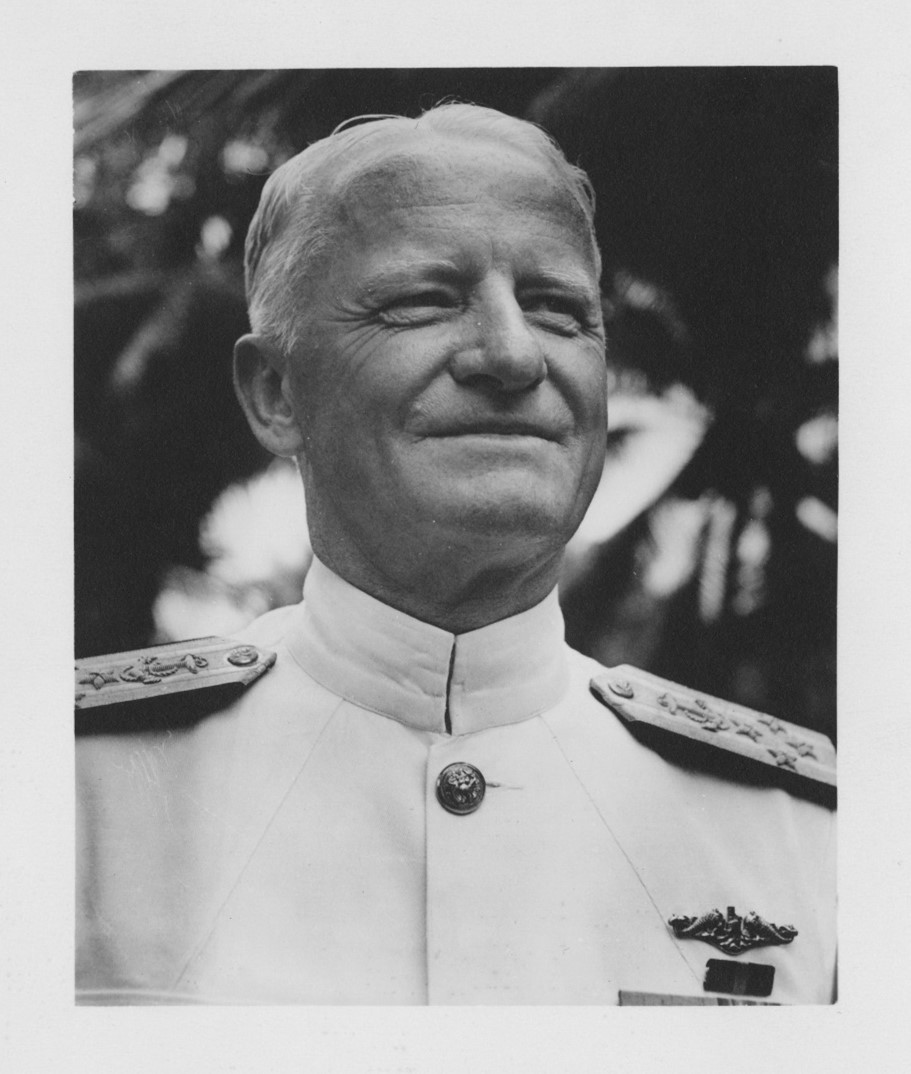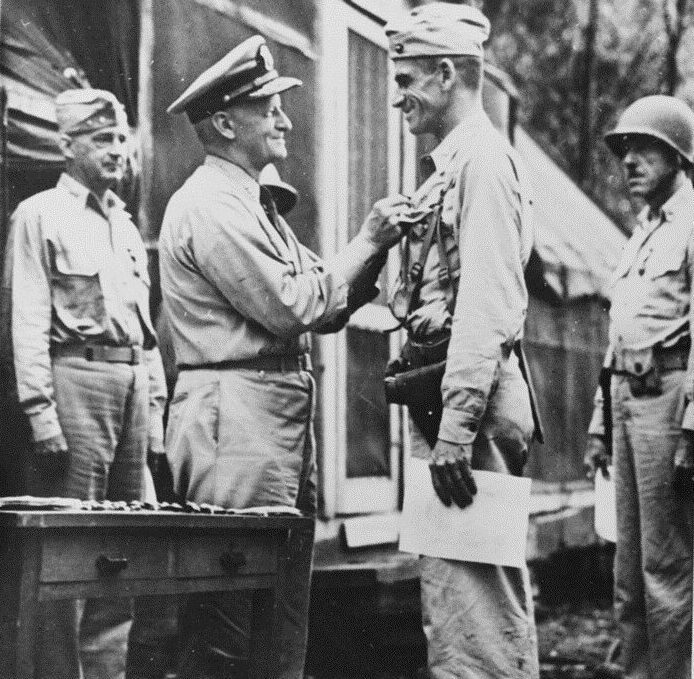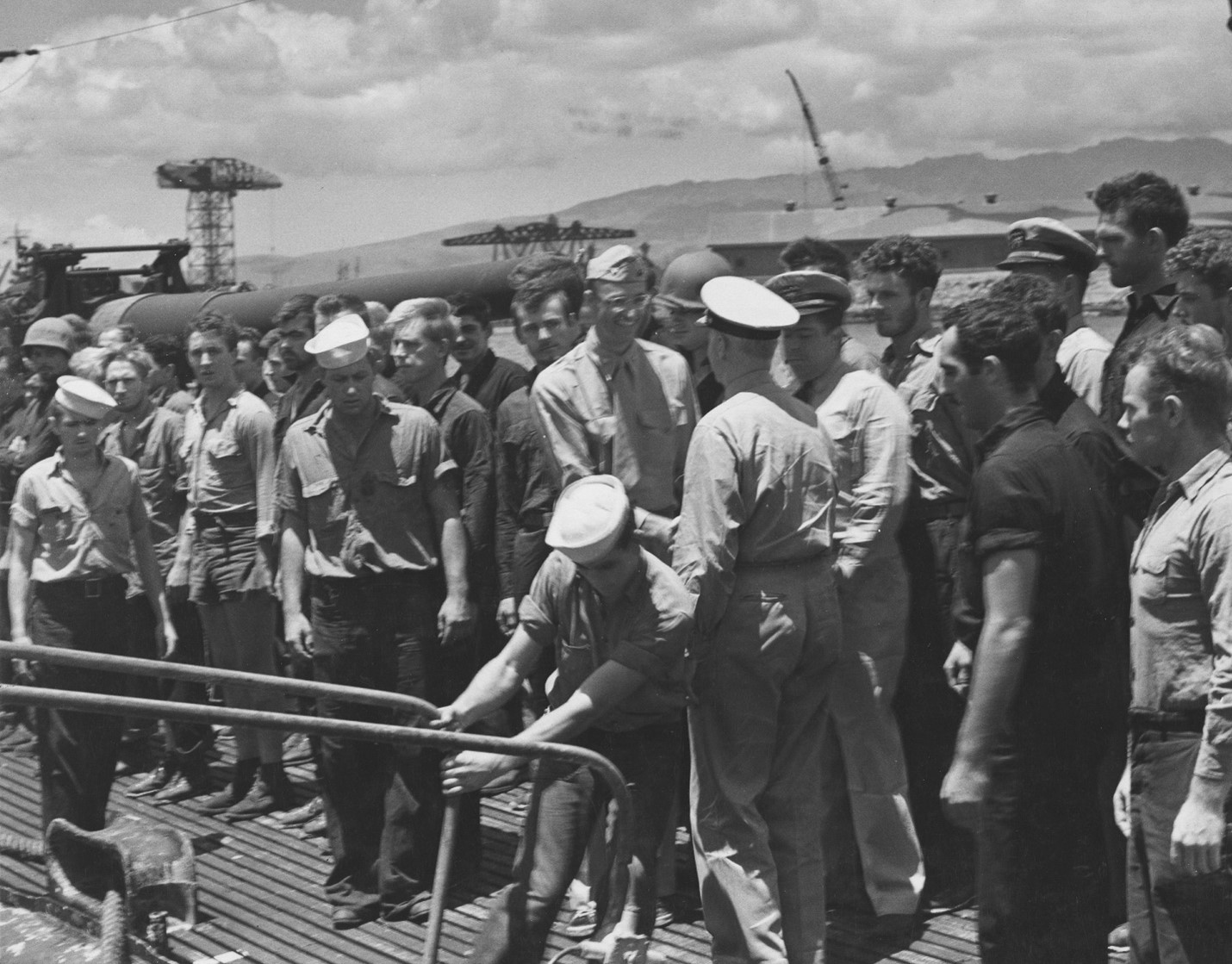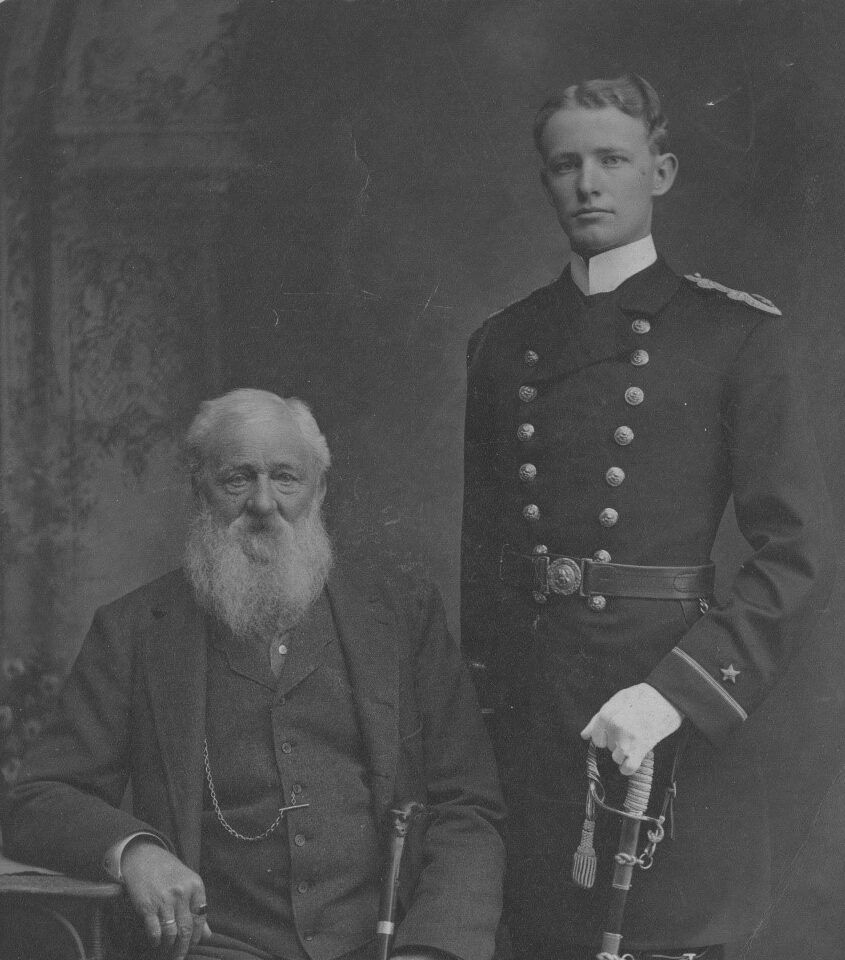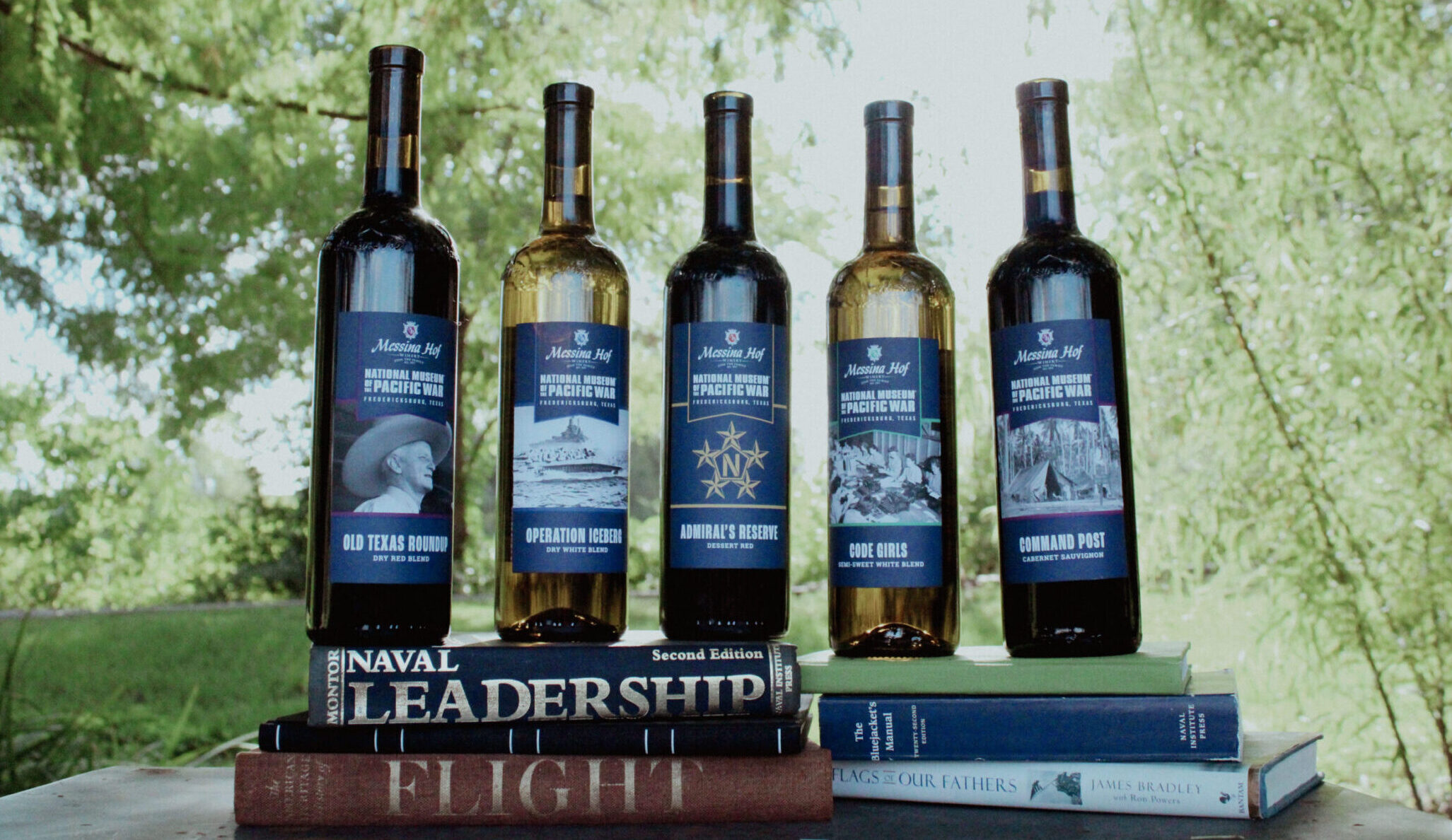
The Museum Collection
Learn more about Messina Hof's newly released wine collection supporting the National Museum of the Pacific War.
Raise a Glass in Gratitude of our Nation’s History of Strength and Fidelity
Messina Hof Winery is proud to be a veteran-owned business and family winery with a history of three generations of United States military service. Messina Hof is honored to craft and showcase a wine collection for the ages that pays respect to the brave men and women that served during World War II and specifically in support of the Pacific War operations.

Messina Hof with the Admiral Nimitz Foundation, support the preservation and honor the impact of World War II stories. Each purchase benefits the National Museum of the Pacific War.
National Museum of the Pacific War
The National Museum of the Pacific War (NMPW), founded in 1967, is the only institution in the continental United States dedicated exclusively to a mission “to engage and inspire present and future generations with the story of World War II in the Asiatic-Pacific Theater and interpret the continued global relevance of its lessons.” A Smithsonian Affiliate, the Museum annually welcomes more than 150,000 visitors, including over 15,000 students, and reaches thousands more through its Distance Learning programs. Spanning six acres in downtown Fredericksburg, Texas, the Museum features three galleries with more than 55,000 square feet of indoor exhibit space, 40 media installations, approximately 1000 artifacts, 15 macro-artifacts, and hundreds of photographs.
The Museum is a Texas Historical Commission Property, operated and funded by The Admiral Nimitz Foundation, a 501 (c)(3) nonprofit organization.
Learn More About NMPW
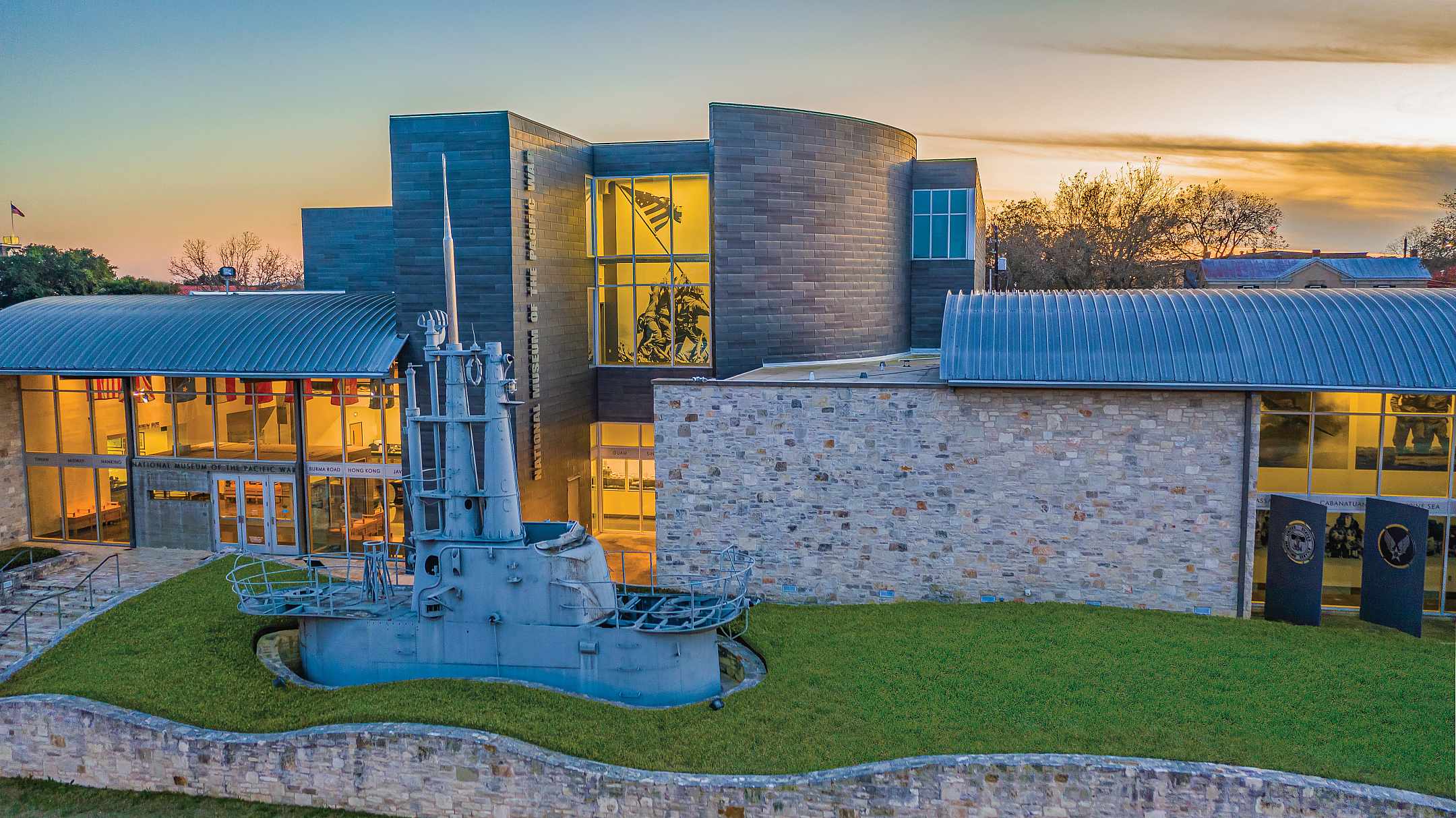
The Admiral Nimitz Foundation
The Admiral Nimitz Foundation was established in 1971 as a 501 (c)(3) to provide additional development funding for the Fleet Admiral Chester W. Nimitz Naval Museum, a museum honoring Fredericksburg’s native son and Commander-in-Chief of Allied Forces, Pacific Ocean Area.
Since then, the Foundation’s efforts have built a well-established and respected institution, which annually welcomes more than 170,000 visitors, including about 15,000 middle and high school students from across the state of Texas.
Learn About the Foundation
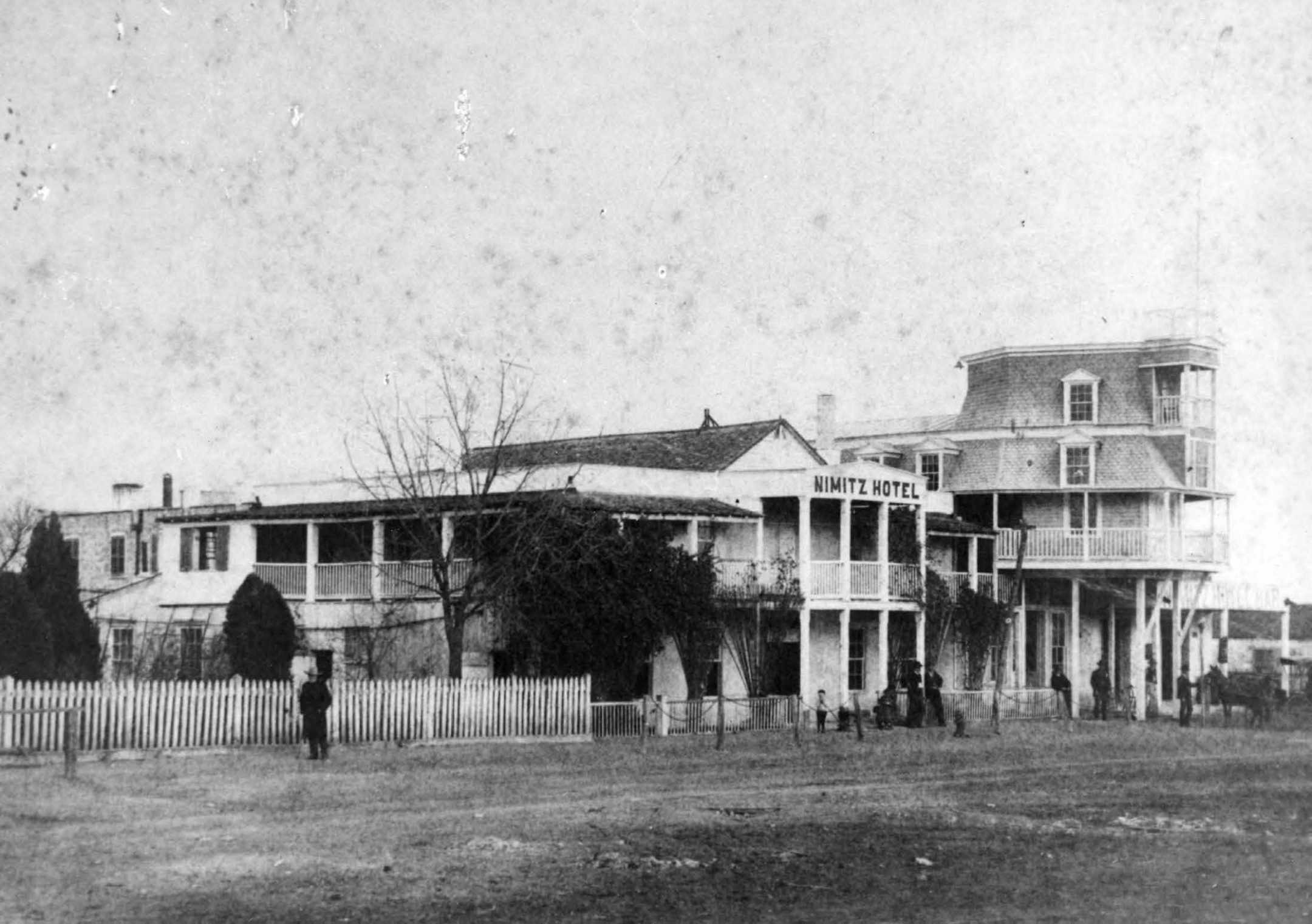
Old Texas Roundup
Old Texas Roundup started as a way to boost morale for all Texans serving in the Pacific Theater during World War II. On January 16, 1944, Admiral Chester Nimitz hosted 40,000 soldiers, sailors, and Marines with a barbecue lunch, live music, dancing, and horseshoes. The Eyes of Texas watched over them with victory looming close the next year in 1945.
This dry red wine blend boasts earthy aromas of rich Texas terroir and flavors of blackberry from the depths of the glass. Oak aging adds balanced layers of black tea and leather. Its lingering finish evokes the lifecycle of vineyard from its roots to the bottle.
Purchase Here
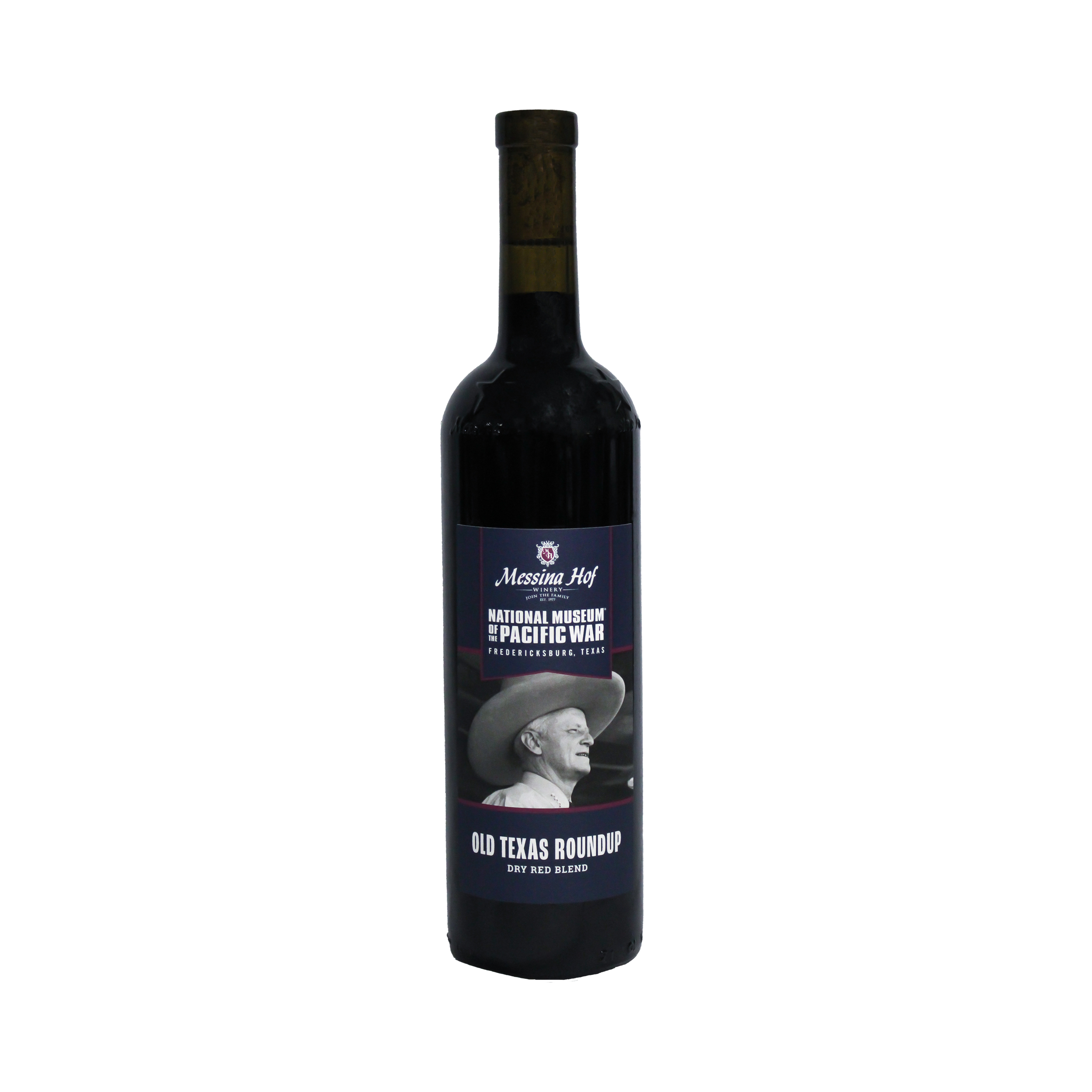
The History Behind the Label
Palm trees swayed in the balmy breeze on a bright sunny morning on January 16, 1944 at Ala Moana Park in Honolulu, Hawaii. Blanton McCord from Sweetwater, Texas stood patiently in line with his Old Texas Roundup card pinned proudly to his uniform. He looked up at the palm fronds bordering a lettered banner that said, “Welcome Texans” with a cowboy on a bucking bronc. He turned and saw the line behind him stretched so far down the street, he couldn’t see the end of it. The excitement in the air was palpable as 40,000 uniformed sailors, soldiers, and Marines impatiently waited at the gate. Texans were there to reunite at The Old Texas Roundup in honor of Admiral Nimitz.
At 9:00AM sharp, the gates opened and men streamed into the park. A large white tent graced the park grounds, the center of the festivities. Banners with the names of Texas cities and towns flew high to aid in the reunion of kindred spirits. Amarillo, El Paso, and even Fredericksburg, the hometown of Admiral Nimitz, were represented. To start the day of festivities the Navy band played “The Eyes of Texas,”
The Eyes of Texas are upon you,
All the livelong day.
The Eyes of Texas are upon you,
You cannot get away.
Do not think you can escape them,
From night ‘til early in the morn.
The Eyes of Texas are upon you,
‘Til Gabriel blows his horn.
Admiral Chester Nimitz was the guest of honor at “The Old Texas Roundup” for all Texans serving in the Pacific, who were eager to gather for a barbecue lunch, live music, dancing, and an afternoon of pitching horseshoes. Horseshoes was one of Nimitz’s favorite pastimes. He grinned as he mingled in the crowd of other Texans. He was a true Texan at heart, born in Fredericksburg to German pioneers.
Perhaps the Old Texas Roundup was just the boost to morale that those in attendance needed to keep their fighting spirit strong, to remember why they were fighting so hard, and that The Eyes of Texas watched over them always. Victory loomed close as the Allies found victory in the Pacific the next year of 1945.
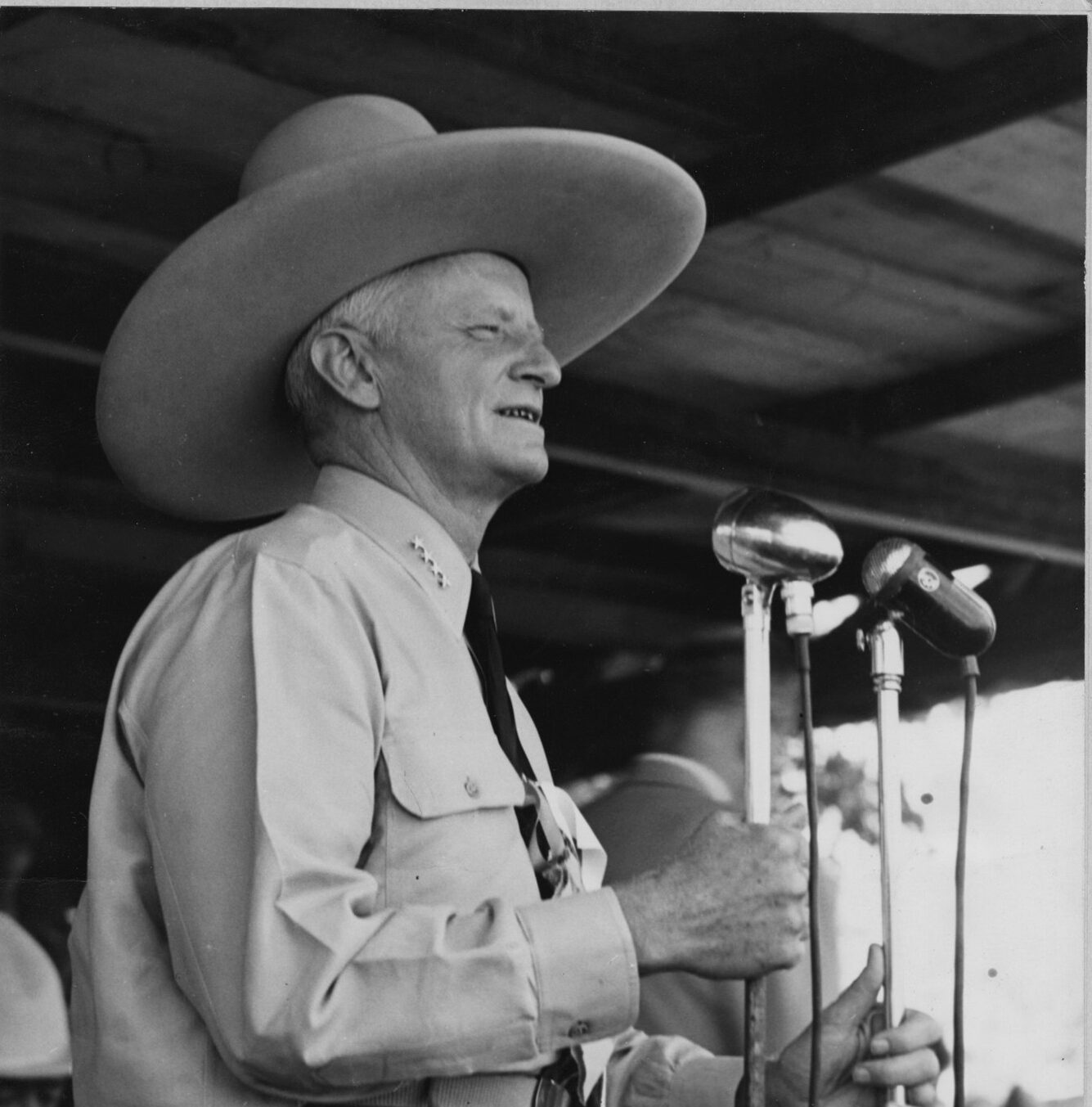
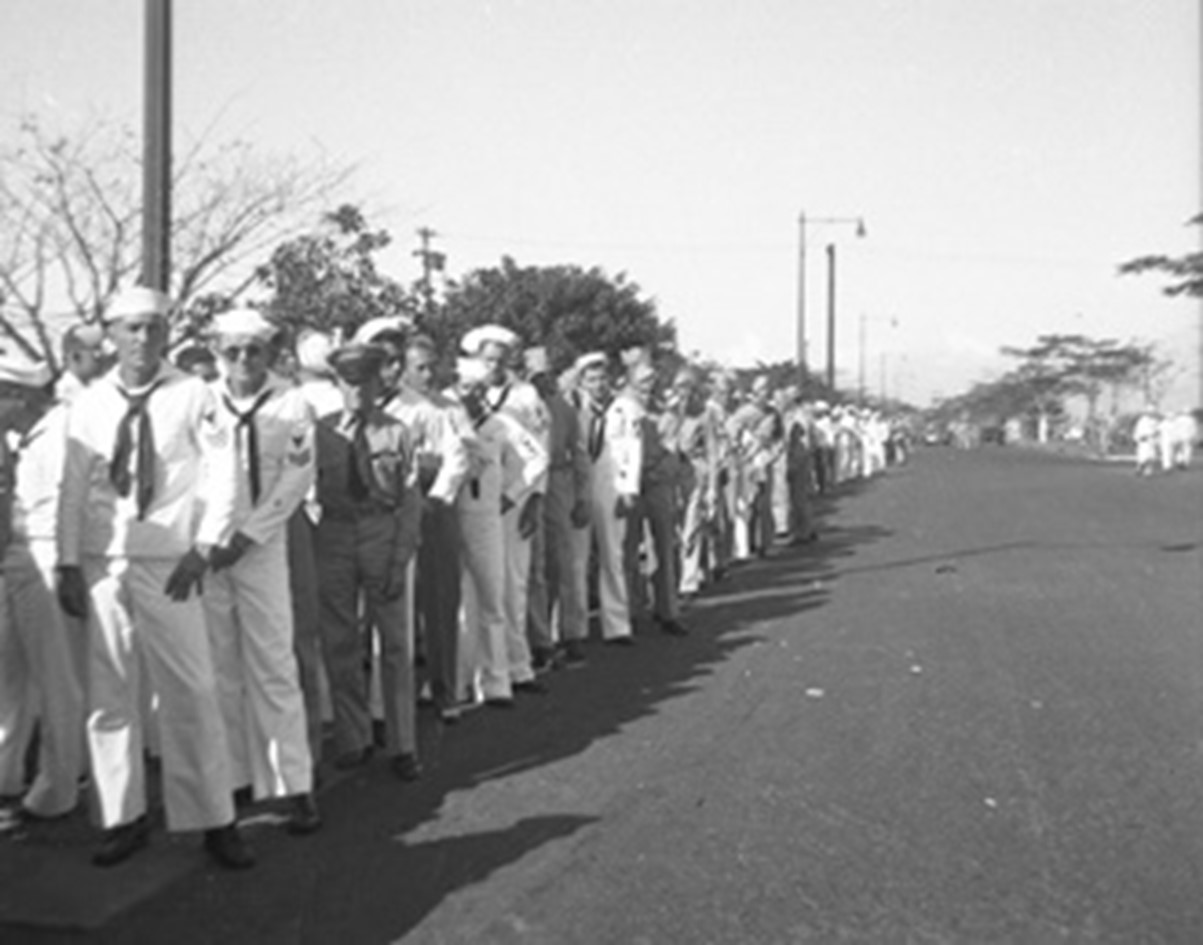
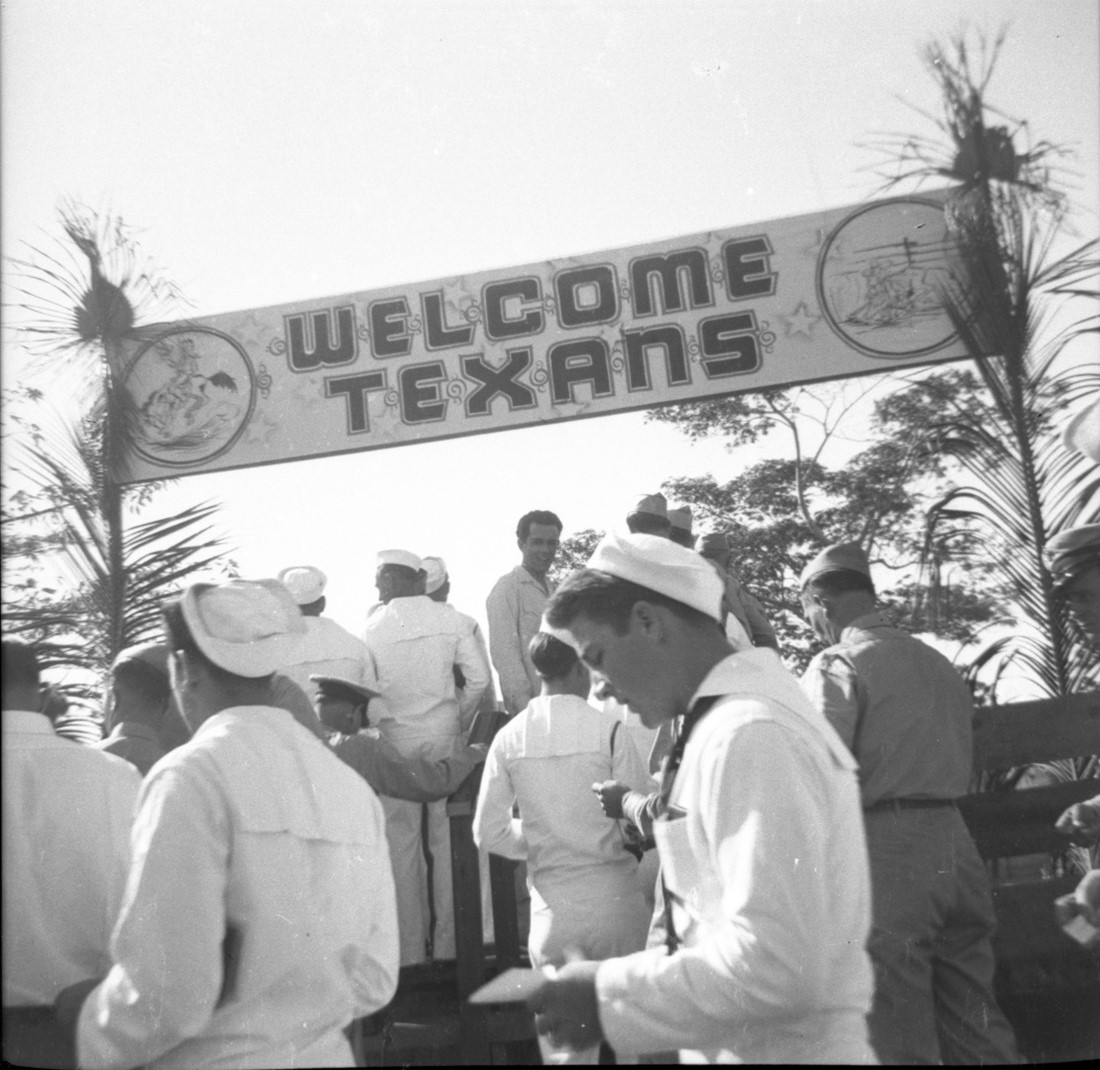
Operation Iceberg
Okinawa Island sits merely a few hundred miles from the main islands of Japan. It was here the Allies determined to define the base for their United States bombers. This mission was called Operation Iceberg. It was the greatest amphibious offensive of World War II and was the prelude to the end of the war.
This light bodied wine is bright and austere with enticing bursts of grapefruit and pineapple balanced with wisps of lemongrass on the nose. This dry white blend pays tribute to Operation Iceberg with crisp notes that refresh, delight, and complement warm weather and seafood.
Purchase Here
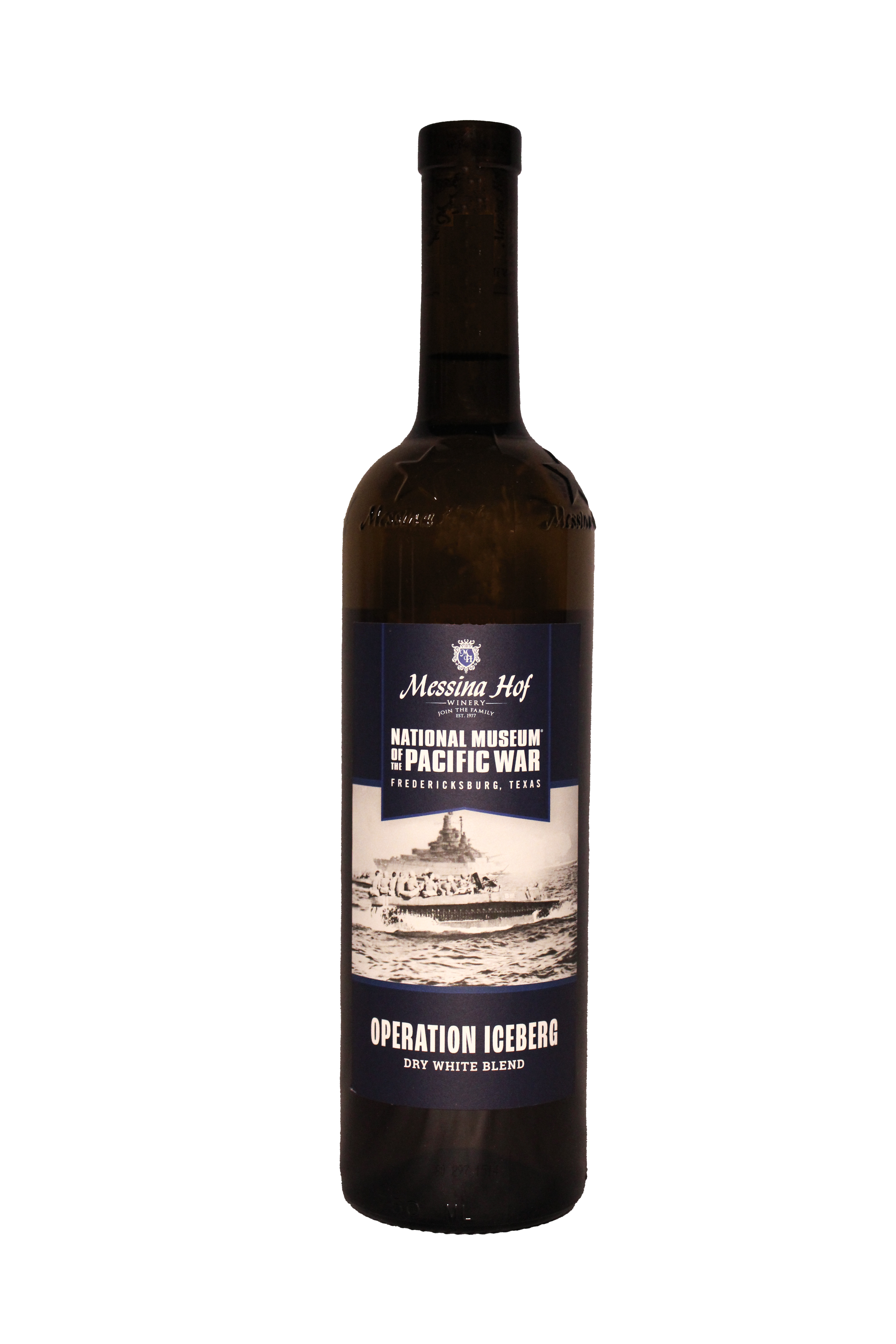
The History Behind the Label
Okinawa Island is the largest of the Ryukyu Islands located southwest of Japan between the East China Sea and the Philippine Sea. It had once been a semi-independent country, which was annexed by Japan in 1879. In 1940, the population was about 435,000, mostly agrarian. With its proximity to the four main islands of Japan – merely a few hundred miles – the Allies had determined that the capture of this island would provide a base from which US bombers could easily strike key mainland targets. The plan for the mission was called Operation Iceberg.
More than 1,300 ships and over 500,000 Allied personnel converged to create the greatest amphibious offensive of World War II. American ground forces of more than 400,000 launched the attack at dawn on Easter morning, April 1, 1945. This long and ferocious battle would last until June 22, 1945, with heavy American casualties and truly staggering losses for the Japanese.
The prelude to the end of WWII, this battle is remembered by many because of the awe-inspiring heroics of Pfc. Desmond Doss – an Army medic and a conscientious objector who refused to carry a weapon. He was awarded the Medal of Honor for his aid and rescue of many wounded men under fire. On one occasion, he carried approximately 75 men, one-by-one to safety. The 2016 movie, “Hacksaw Ridge,” tells Doss’s story.
The Battle of Okinawa also marked the death of celebrated war correspondent and Pulitzer Prize winner Ernie Pyle. Embedded with the Army’s 77th Infantry Division, Pyle landed on Ie Shima, a small island off of Okinawa. On the third day of the incursion, April 18, 1945, Pyle was hit in the left temple by a .30 caliber bullet.
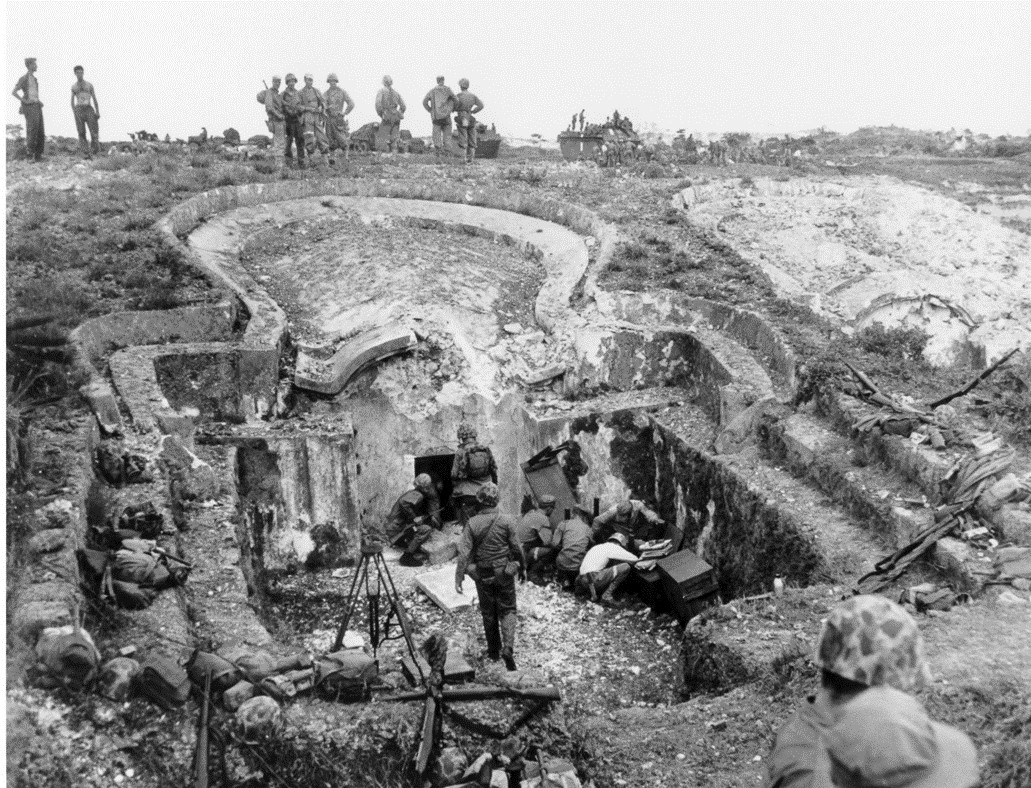
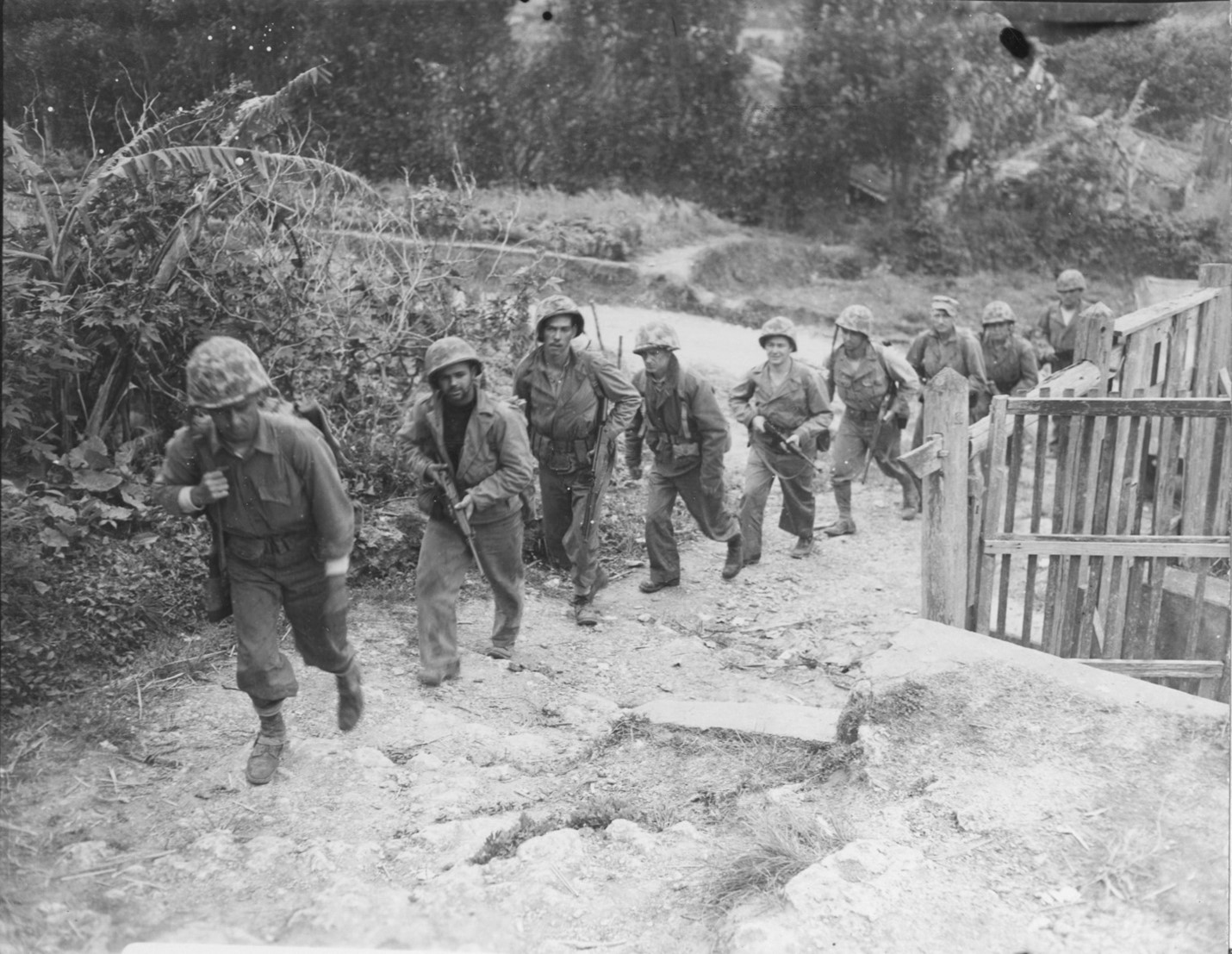
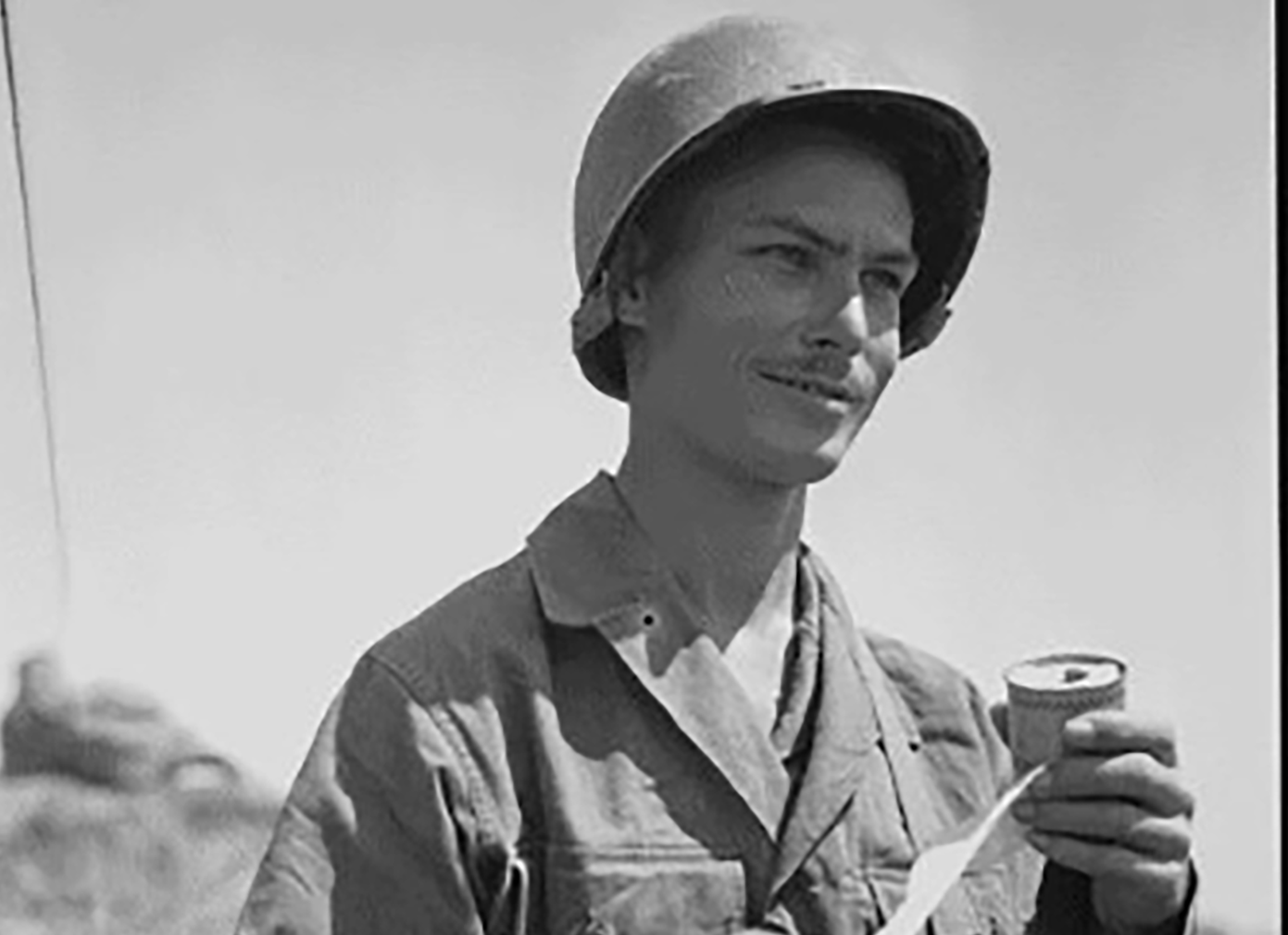
Command Post
The number one priority for a good command post position is survivability, for it is the nerve center of a battle. It holds the tools and personnel – including the commander – from which both strategic and tactical decisions will emanate.
This Cabernet Sauvignon reflects the versatility of the command post and the boldness of those who occupy it. This wine showcases suede tannins with a strong body as currants, plum, and cocoa powder march across your taste buds.
Purchase Here
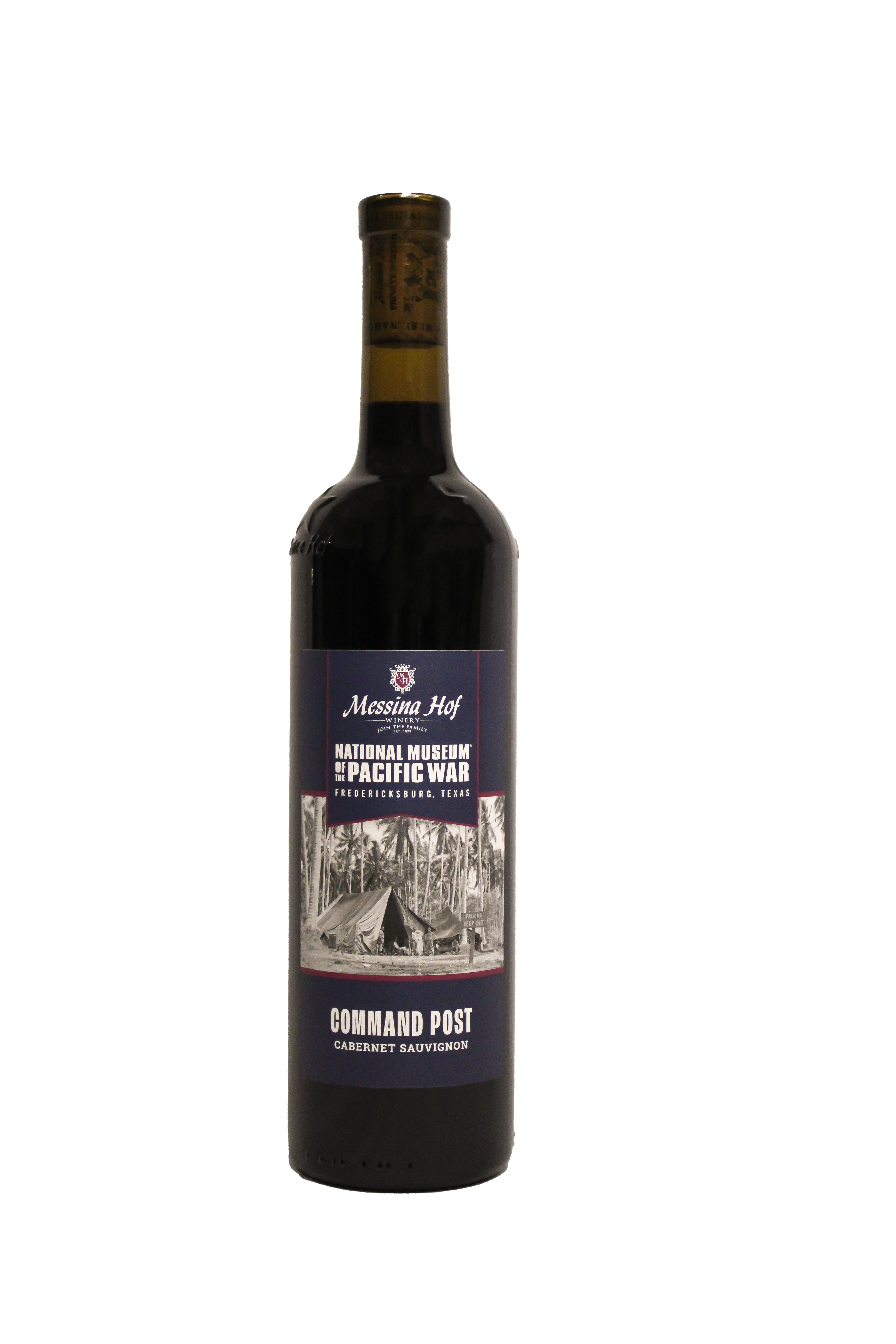
The History Behind the Label
The number one priority for a good command post position is survivability, for it is the nerve center of a battle which holds the tools and personnel – including the commander – from which both strategic and tactical decisions will emanate. The exact location of a command post depends heavily on concealment and mobility. It’s critical for the success of a battle campaign to hide this post from the enemy with good camouflage and 24-hour security. Location, size, and access are also factors for positioning.
It is ideal if the command post is situated in the center of the area of operations, yet hidden near a fast route for in and out transportation. The most favorable option for size would be an area large enough to accommodate the liaison teams from other units, have a communications support area, maintenance areas, and room for eating, sleeping, and a latrine.
However, battle is unpredictable and some command posts must be constructed very quickly. Sometimes in more temporary locations like on a beachhead or dug out in a trench. At times, concealment might consist of a tarp or area vegetation such as brush or branches as true cover can be meager during the heat of battle. There, regardless of the conditions, commanders find a way to utilize their maps and intel to make strategic decisions and then communicate them to the front line via radio.
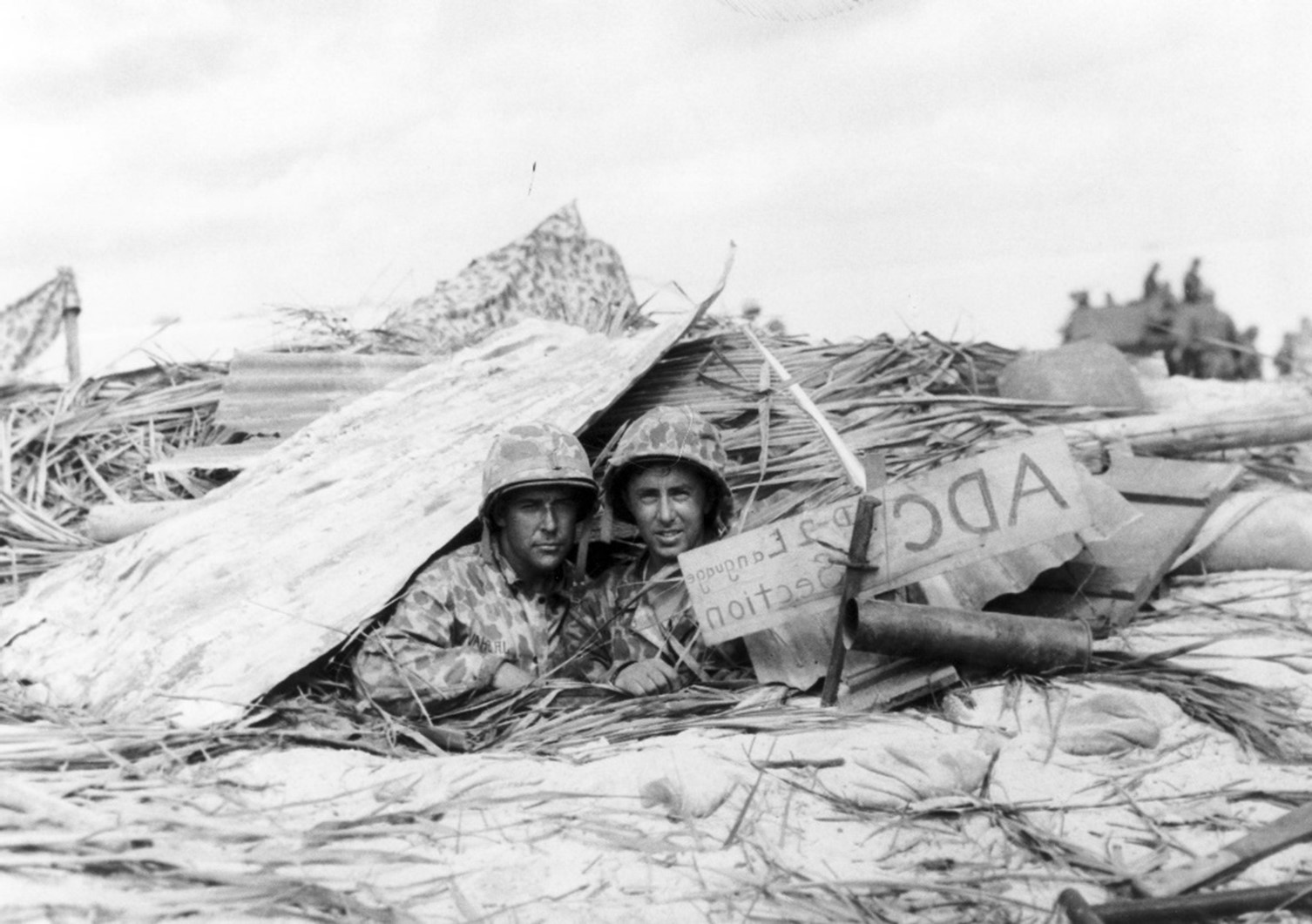
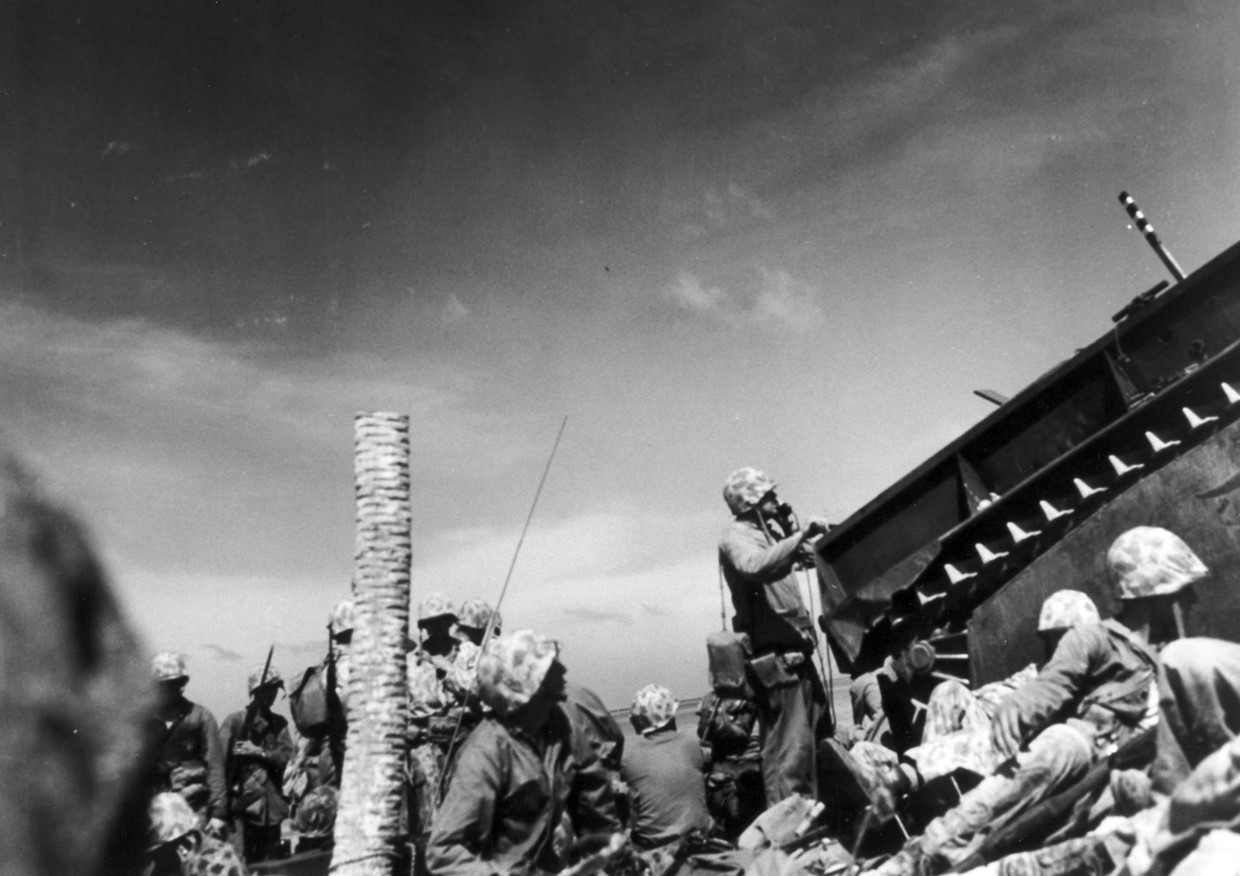
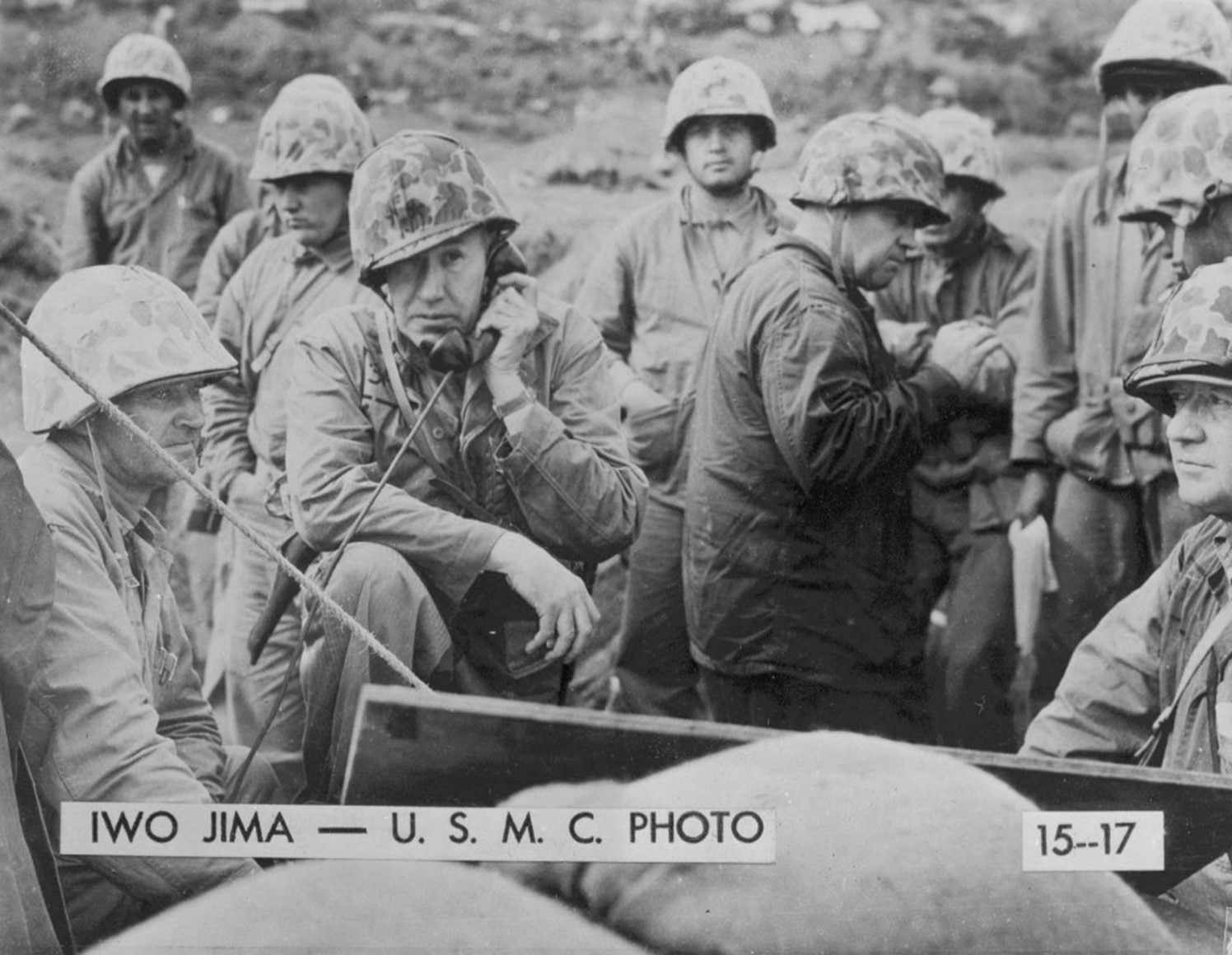
Code Girls
During World War II, the United States military recruited women from around the US to work in various intelligence branches. These women formed an elite group of more than 10,000 female codebreakers known as, “Code Girls.” They were critical to victory in the European and Pacific Theaters.
This semi-sweet white wine blend is refreshing and beautifully dynamic. Ripe tropical fruit and candied citrus develop in the glass with each sip revealing notes of fragrant white flowers, oranges, and pineapple. This vibrant wine pays homage to the strong women that balanced the home front alongside critical contributions to the World War II war efforts.
Purchase Here
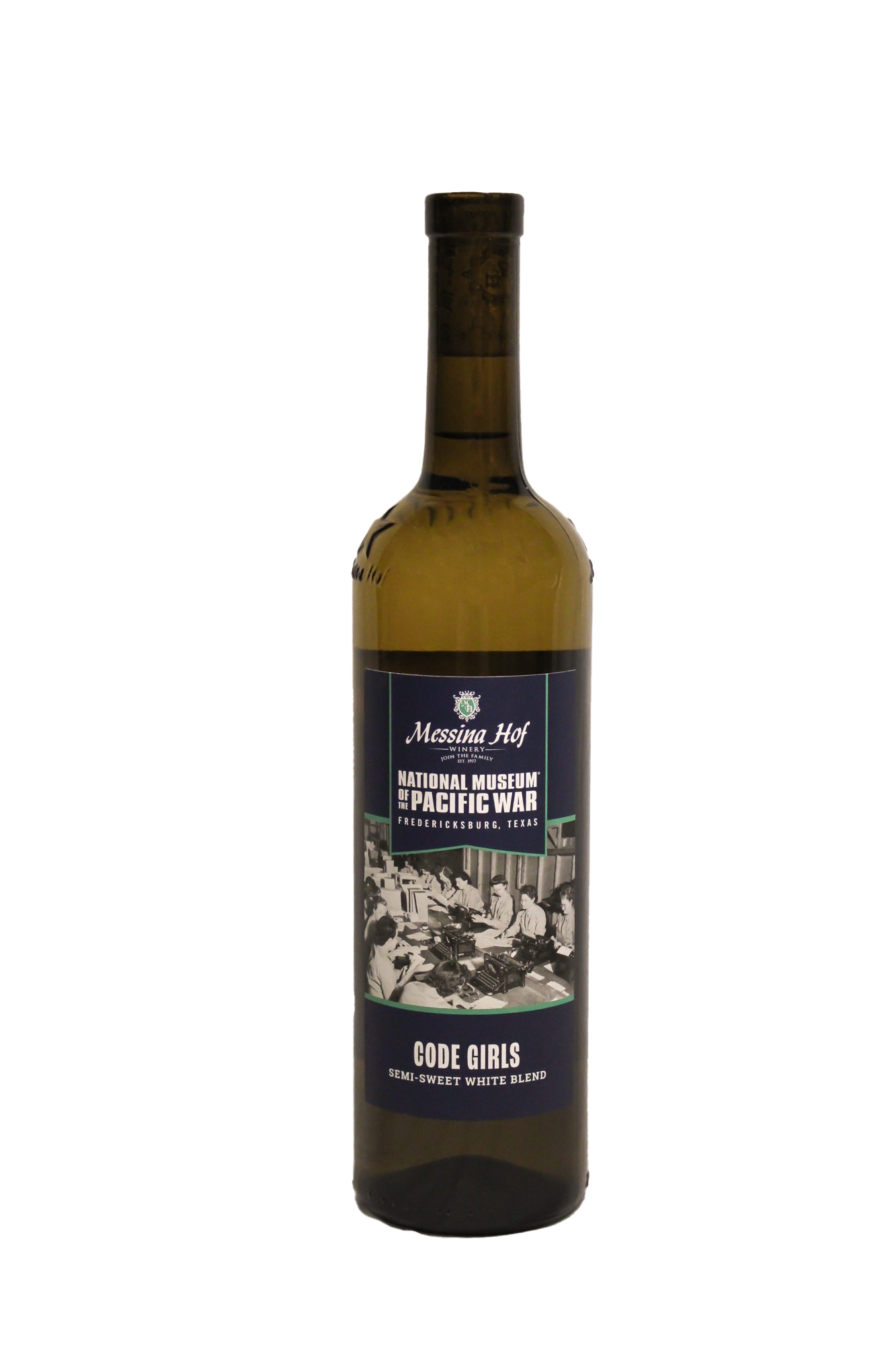
The History Behind the Label
In 1980, when Ann Caracristi was selected to be NSA Deputy Director, she shattered a glass ceiling by becoming one of the highest-ranking female codebreakers and the first female in that job. However, it was 40 years prior that the ceiling had already been “cracked” by Caracristi and other women recruited from around the U.S. to work in various intelligence branches of the U.S. Military. They formed an elite group of more than 10,000 female codebreakers known as, “Code Girls.”
In May 1941, prior to the attack on Pearl Harbor, the American Women’s Volunteer Services proposed that women be given a greater opportunity to contribute to the war effort and so recruitment and training for the Code Girls began. They were given aptitude tests and crossword puzzles to measure their abilities. The women selected became highly specialized in the arts of cryptography and cryptanalysis – the creation of codes and the breaking of codes, respectively.
After training was complete, thousands of Code Girls moved to Washington, D.C., and worked in two top-secret compounds. Their task was breaking Japanese and German military codes. The women recruited for these jobs were highly educated as deciphering these clandestine codes required strong mathematical skills. This at a time when only five percent of American women reported having a college education.
By 1945, 70 percent of U.S. codebreakers were female and their ability to decipher was critical to victory in both the European and Pacific Theaters. Some individuals are notable for extraordinary contributions such as Ann Caracristi who helped reveal locations of Japanese supply ships. Elizabeth Friedman cracked a cipher to break up a Nazi spy ring in South America. Genevieve Grotjan identified the key pattern to solving the “Purple” cipher used in messages to high-ranking Japanese officials, and Virginia Aderholt who decoded a Japanese transmission agreeing to unconditional surrender, ending the war.
After WWII, the Code Girls took vows of silence and their promise remained unwavering decades later. Having worked under a veil of secrecy, they were instructed to say they worked as secretaries throughout the war. Despite numerous contributions, and the countless lives they saved, they never received the public recognition they deserved. They carried their service as a secret throughout their entire lives and are in every sense considered true, unsung heroes.
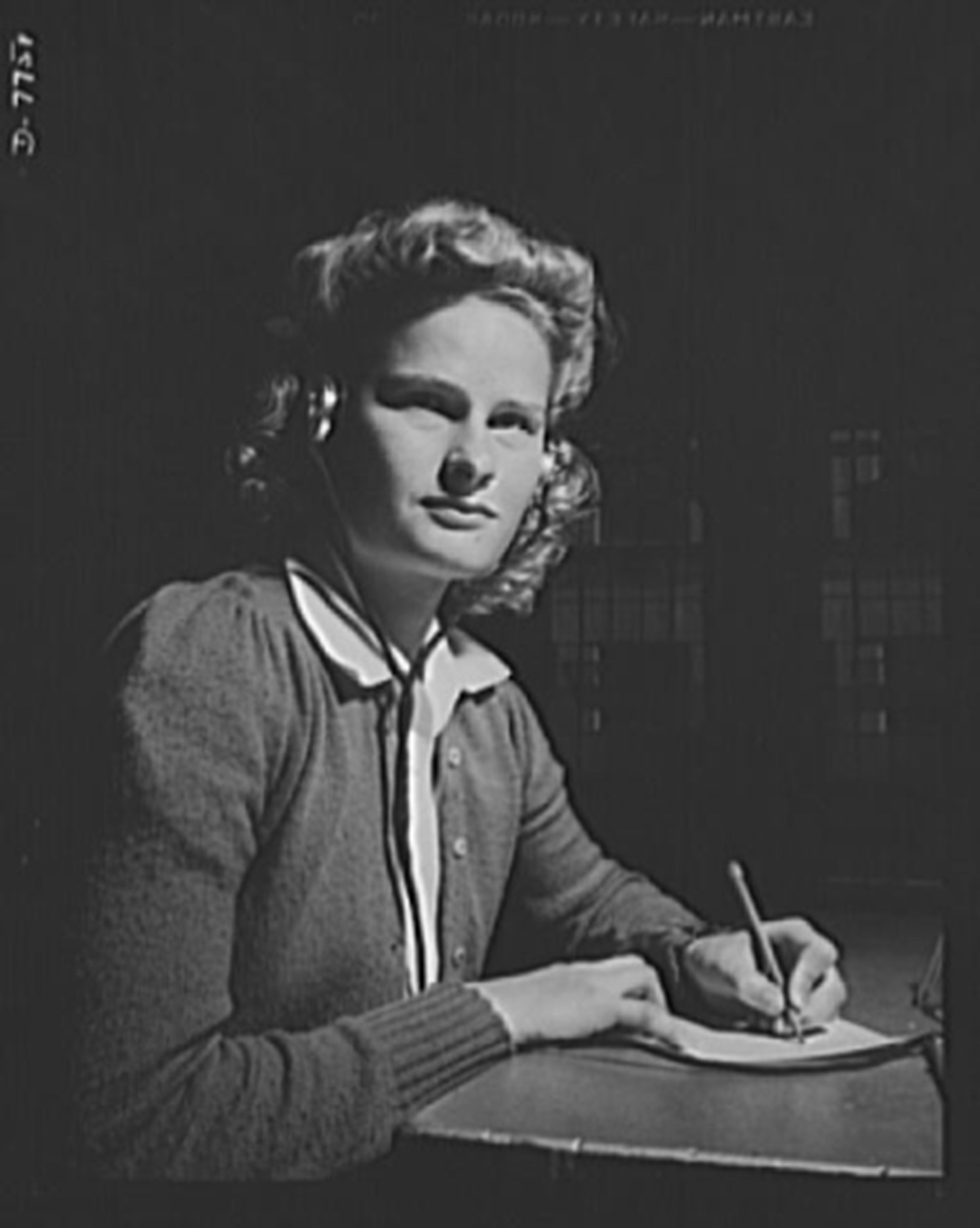
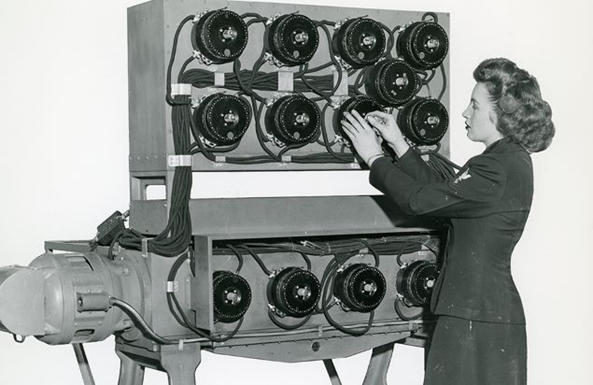
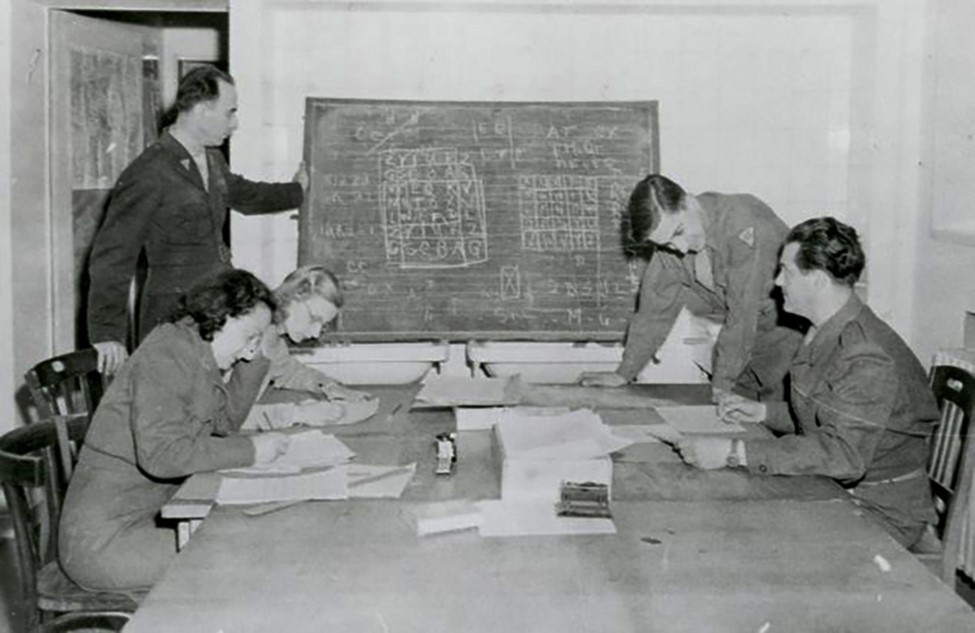
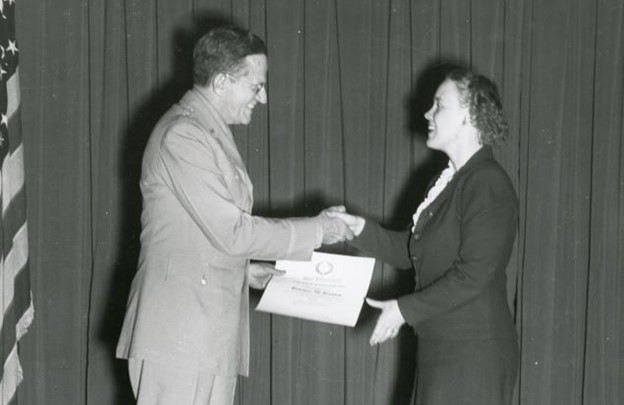
Admiral's Reserve
Chester Nimitz is a native Texan who embodied humility, respect, pride, and unwavering strength in the face of war. After the attack on Pearl Harbor, Chester Nimitz was chosen to take charge at Pearl Harbor. He took command of the Pacific Fleet on December 31, 1941 and was promoted to Admiral that same day. Admiral Nimitz is one of only four naval officers to ever receive the rank of 5 star general.
This dessert red is bold, yet pleasant. Admiral’s Reserve embodies aromas of leather and dried herbs, while commanding flavors of black cherry and caramel that go beautifully with flaky pies and chocolate covered strawberries.
Purchase Here
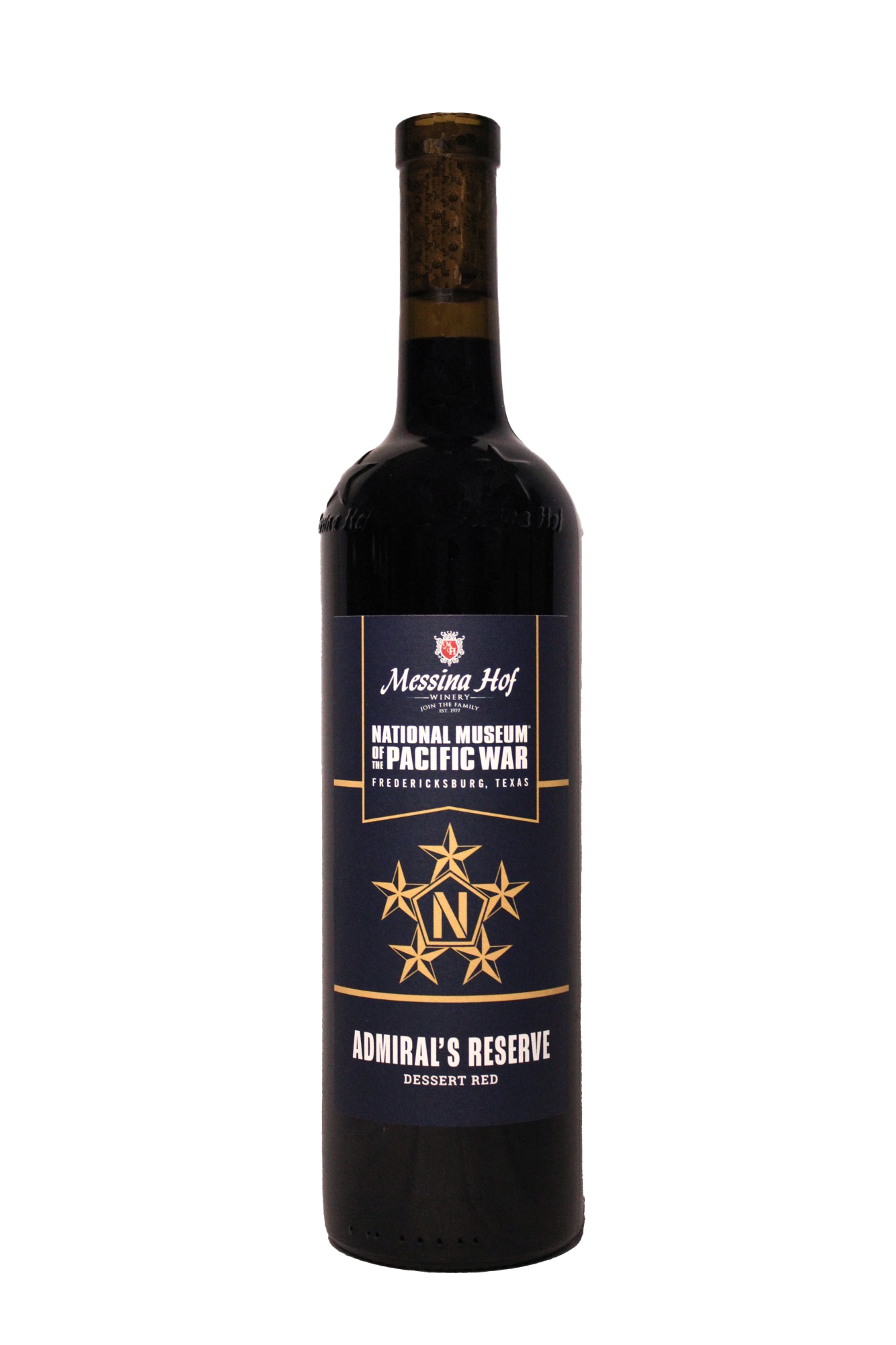
The History Behind the Label
Born in February 1885, the first home that Chester Nimitz knew was the steamship-shaped Nimitz Hotel on Main Street in Fredericksburg, where he lived with his recently widowed mother and his paternal grandfather. He regarded his grandfather as “the most important man” in his life and whose wisdom and advice helped him to navigate through life. He left high school at age 16 (without a diploma) when he was accepted at Annapolis and there, he graduated seventh in his class in January of 1905.
Early in his career, he received the Silver Life Saving Medal for leaping overboard to rescue a drowning sailor while commanding the USS Skipjack, one of the Navy’s earliest submarines. In a letter to his then future wife, Catherine Vance Freeman, he said with characteristic modesty, “I had to go swimming yesterday, and it was awfully, awfully cold.” He married Catherine in 1913.
After the attack on Pearl Harbor, President Roosevelt chose Nimitz over 27 other flag officers -all of whom were senior to him – to take charge at Pearl Harbor. With FDR’s orders to “get the hell out to Pearl Harbor and don’t come back until the war is won,” Nimitz assumed command of the Pacific Fleet on the last day of 1941. He was promoted to Fleet Admiral the same day.
A thoughtful and soft-spoken man, upon meeting officers and others under his new command, he assured them, “I have complete confidence in your ability and judgment.” Many had feared he would judge them on the failures of December 7th. Instead, he asked for their help.
Nimitz was a congenial and accessible leader, and his sailors loved and respected him, because he always put them first. He invested time in them to build a team that he could trust to do their job. He made himself available to meet every commanding officer that pulled into Pearl Harbor. He personally presented men their awards instead of delegating that job to a lower ranking officer. He believed that mission accomplishment should come before his personal happiness, and the best way to achieve his ends was to persuade and inspire the men under his command.
In December 1944, Nimitz was promoted to the new, five-star rank of Fleet Admiral. After leading the naval victory in the Pacific War, Fleet Admiral Nimitz signed the Japanese Instrument of Surrender on behalf of the U.S.
1.Craig L. Symonds, Nimitz at War: Command Leadership from Pearl Harbor to Tokyo Bay (Oxford University Press, 2022)
2.Samuel Elliot Morison, The Two-Ocean War: A Short History of the United States Navy in the Second World War (Little, Brown & Co., 1963).
3.Edwin Palmer Hoyt, How They Won the War in the Pacific: Nimitz and his Admirals (Lyons Press, 2011).
